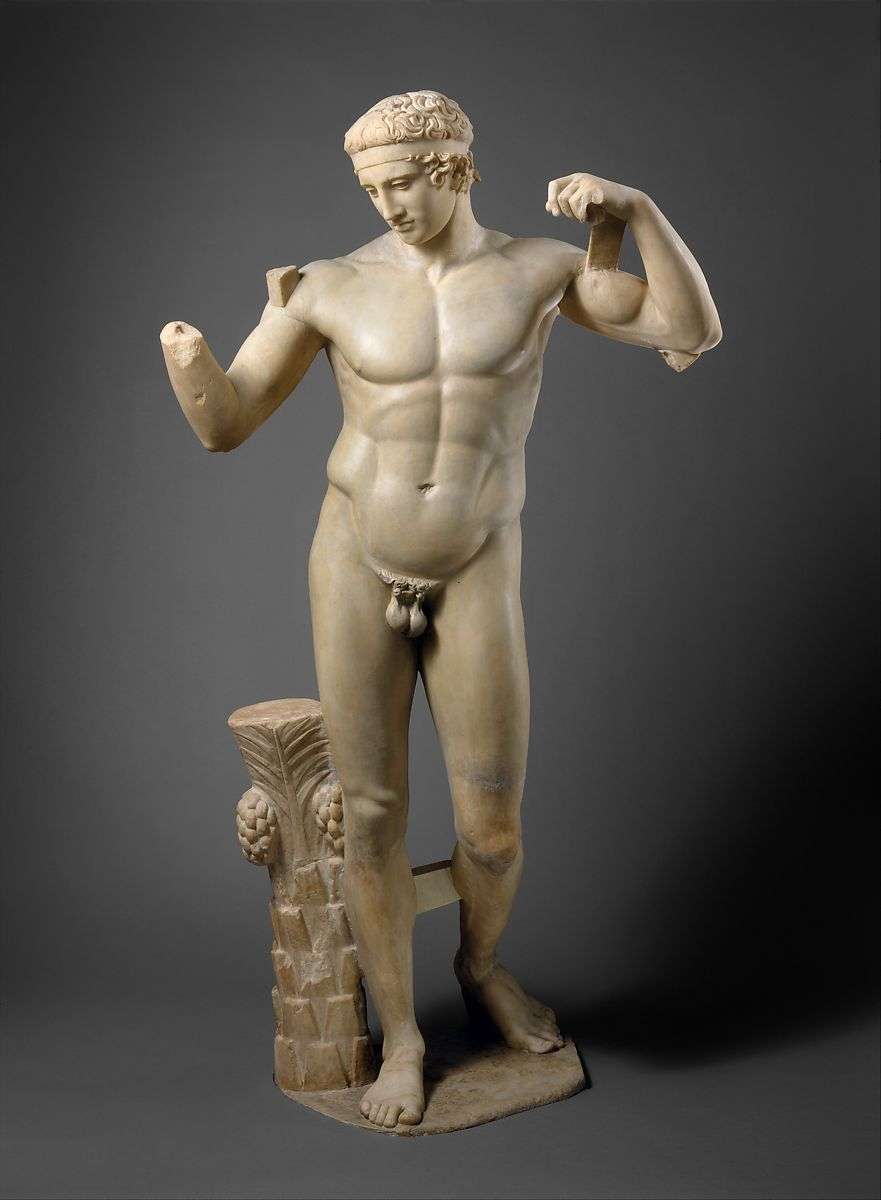‘Disability’ is a modern western term. There is no ancient Greek equivalent for it. The ancients rather resorted to terms to denote ‘the ability they perceived to be lacking’: someone who could not see, or not walk. Also, there was no concept of ‘normal’, bodily or otherwise, in the ancient Greek language, since norms imply numbers and statistics – a world unknown to the Greeks in Antiquity and very much relating to modern science and medicine as it came into being from the beginning of the nineteenth century onwards. ‘Normality’ indeed presumes modern concepts as measurability and fixed standards.
Yet ancient doctors believed that some corporeal dispositions were preferable to others. Without precise parameters to denote people with obesity or who are underweight, Galen (second century CE) mentioned “a proper disposition of the flesh in the human body”. And he spoke of bodies that he believed equalled the canon of the sculptor Polykleitos (fifth century BCE), who provided a formula for rendering the concept of the ideal, symmetrical body into material form (see Figure 1).

To Galen, such bodies in due proportion are perfectly in the middle of the two extremes of thinness and largeness. Any sort of asymmetry is alien to bodies like these. His sentiments are not only found with ancient doctors – they are well attested throughout ancient literature up to late Antiquity, including with the Early Christian Church Fathers (first to eighth centuries CE). Indeed, instead of normality, ancient Greeks referred to conformity (emmetron or prosèkon).
Are the ancient Greeks to blame for such concepts as this? For sure, the classical ideal of the perfect body, reflected in ancient sculpture and other works of art, has not only been admired throughout the centuries, it has also been abused, at the cost of those ‘forgotten others’ who did not or could not conform to the ideal. Nazi doctors and eugenics thinkers, who frequently fancied the Greek warrior-like Doric ideal, are but one truly horrific example of this. To some scholars, the ‘ableist’ approach to the human body, which so much characterises western culture, is an offspring of the same Greek ideals. While there may be some truth in this, one should keep in mind that such approach probably rather relates to the way Greek concepts were used in intellectual history of later times, than to actual Greek practice.
After all, the great majority of bodies the Greeks saw and encountered on a daily basis, would not at all fit into the ideal as reflected in their art. And Greek artefacts did pay attention to other bodily conditions too (see Figure 2).

Artistic representations of the body referred to as ‘grotesque’ by scholars due to the exaggeration depicted by their creators are prominent in surviving Hellenistic and Graeco-Roman art (see Figure 3). They probably aimed to stress these persons’ ‘otherness’, setting them apart from the wealthy who commissioned such statuettes.

And ancient people were surely not surrounded by images of impossibly ‘perfect’ bodies as we see them on a daily basis in enticing and omnipresent publicity that leaves little to the imagination. Real people in the ancient world did not conform to the unrealistic ‘ideal’ view and nor do we today.
This was originally posted in support of our exhibition Ancient Greeks: Science and Wisdom that was open from 17 November 2021 – 5 June 2022. This collection displayed intriguing examples of how science is being used to uncover new insights about the Ancient Greek world.
